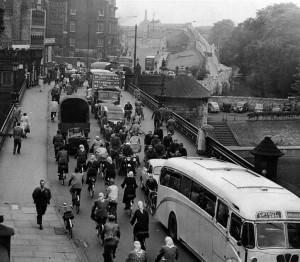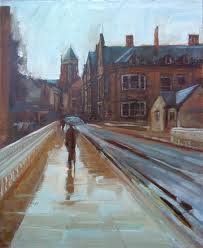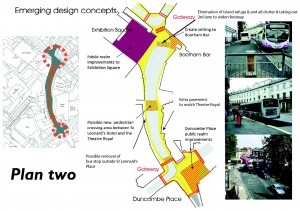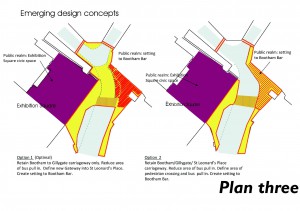Reducing the volume of traffic on the Lendal bridge/St Leonards Place route is a commendable objective.
The Council’s proposal to ban cars from the route (between 10:30am and 5:00pm) is badly timed and ill considered.
The report reveals that there will be an increase in the number of vehicles using other bridges
A1237 22%
Clifton 8%
Ouse 17%
Skeldergate 14%
A64 5%
Although the traffic management model, which cost the Council tens of thousands of pounds to purchase, could provide the information, the report singularly fails to indicate the additional delays that there will be on these routes.
Nor does it tabulate the additional emissions which will be generated by longer journey lengths. Several of the alternative routes already have air quality problems.
Both have an economic consequence.
The start date is several months before capacity improvements on the A1237 (and obvious alternative route) are completed. The A59 junction bottleneck won’t get its enlarged roundabout until Spring 2014 (at the earliest).
So what’s the hurry?
The idea of restricting access to York City centre bridges is not new.
Some 25 years ago the bridge was closed to traffic to allow essential maintenance work to be completed. Grid lock did not result and the environment for pedestrians was improved.
But the traffic did not magically disappear. Drivers from west York were left with a long detour to reach the York hospital. Residents living in places like Haxby and Huntington faced equally long detours to reach the railway station.
Some did choose other modes of transport. There was a modest increase in bus usage and those cycling. But others simply put off journeys, selected out of City centre shopping options or cancelled leisure trips altogether.
Fast forward to 2003 when a debate about reducing traffic on the same corridor was initiated. There was huge opposition with (ironically) Labour Councillors claiming that any restrictions would being traffic chaos to the Bootham/Kingsway West/Crichton Avenue area.
It was agreed then that any major change would have to await improvements to the A1237.
The Council plans to use number plate recognition technology to enforce the ban, They hope eventually to extend the hours to 7:00am – 7:00pm
The world has moved on over the last 20 years.
Traffic levels are already much higher than they were when Lendal Bridge was last closed.
Congestion levels on some alternative access routes such as Gillygate are already high. There are no options to provide bus priority measures on some arterial links. Public transport in the evening rush hour will suffer.
So what should the Council do.
1. Consult with residents and businesses before implementing any changes
2. Establish objective criteria on which to base any judgement of the success of any trial
3. Start small. Introduce a change for the period 10:30am and to 4:00pm(avoiding the busiest times of the day)
4. Make it a 3 month trial
5. Coincide the start of any trial with the introduction of the new A59 park and ride site (and congestion reducing measures on the A1237)
Some residents have started a petition opposing the closure plan.





